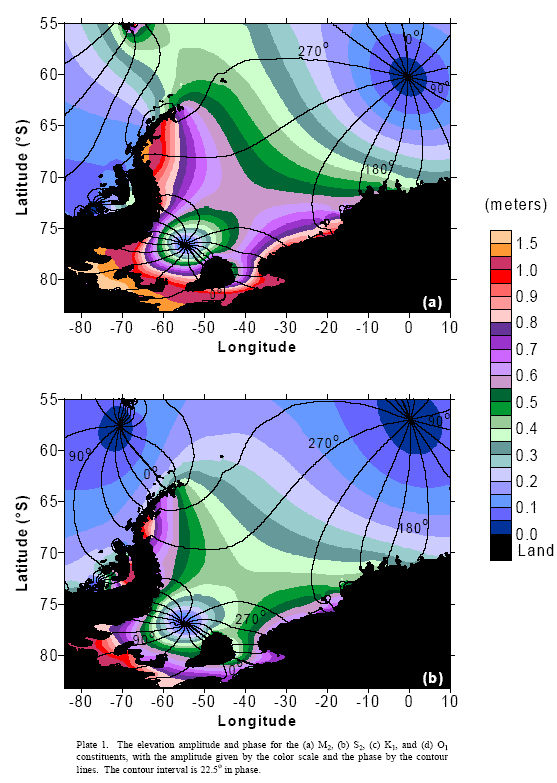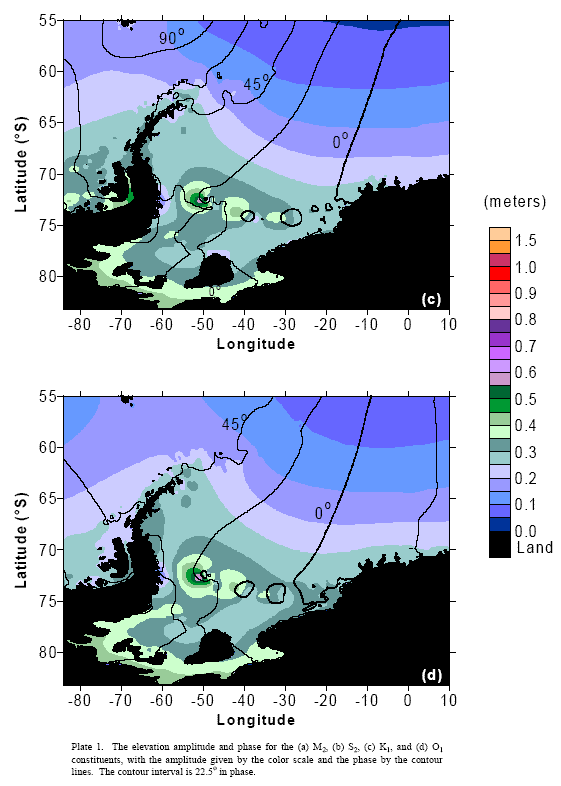 A Look at Arctic and Antarctic Tides
A Look at Arctic and Antarctic Tides
Global Ocean Tide Models
-
Using highly accurate altimetry from the TOPEX/Poseidon Mission, researchers have developed numerical models to calculate the tide on global, ocean, or basin scales.
-
When compared to old models based on harmonic analysis, these tidal predications are far more accurate for the deep ocean.
The following figures depict model results for some of Earth's colder regions.
Antarctic Tides (L. Padman and S. Howard, ESR)
Amphidromic systems in the Weddell Sea. This is an excellent example of the differences between the four major harmonics. (Robertson et al., 1998)

CU/NAVOCEANO Global Ocean Tides: model of M2 tide in the Bering Sea.
As a student of glaciology, I am most interested in how the tides affect glaciers and ice sheets. Therefore these examples were selected from polar regions, where they are more likely to relate to tidewater glacier behavior.

Tidal flexure of the Ross Ice Shelf. (Animation by L. Padman, Earth & Space Research)


